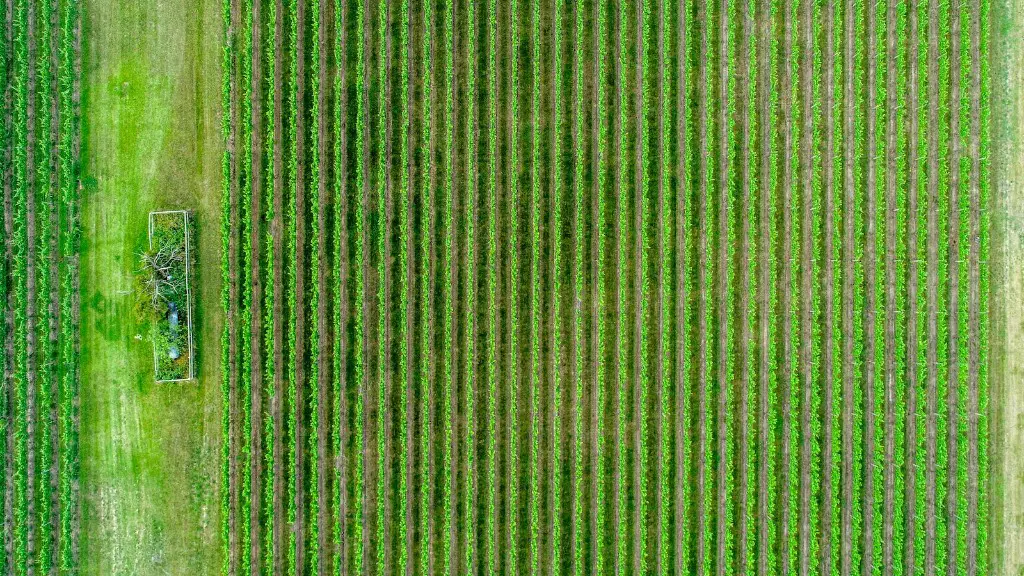Agricultural milking machines have been around for centuries and have become a vital piece of equipment for dairy farmers. It is a machine used for milking cows and extracting their milk into a container for further processing and storage. The milking machine consists of various components such as a milking claw, a pulsator, a vacuum pump and a controlling unit that operate together to ensure an efficient milking process. Milking machines can help save labor, improve efficiency and increase the production of dairy products.
The milking process is started by using a milking claw to attach the milking cups to the teats of the cows. The machine then then uses a pulsator system to create a rhythmical pressure, which stimulates the release of the milk from the cow’s udder. A vacuum pump then extracts the released milk into the milking bucket and the controlling unit regulates the speed and pressure of the pulsator. The whole process can be done in a short span of time, allowing for quick and efficient milking of a large number of cows.
The milking machines also have various safety features, such as automatic shut-off, that turn off the power when a certain level of vacuum is reached, and disassembly clips that disconnect the cups from the claws in case of emergencies. The milking machines are also made from corrosion-resistant materials, which help them to last longer. The milking machines also have various settings that can be adjusted to the different cows and their individual milking requirements.
Agricultural milking machines are becoming increasingly common on dairy farms as they offer plenty of benefits such as: higher milking yields, improved milking efficiency, easier maintenance, reduced labour costs and improved safety compared to manual milking. As the milking machines are becoming increasingly sophisticated, the farmers are able to access new technologies that allow them to monitor the health of their cows and the quality of their milk.
Agricultural milking machines can be a great asset to dairy farms, as they help to ensure efficient milking, improved safety and increased yield. With the advancement of technology and more sophisticated machines, farmers can have more control over their milking process and achieve better results.
Cleaning and Maintenance of Milking Machines
Cleaning and maintenance of the milking machines is very important to ensure that the cows remain healthy and the milking process is successful. Proper cleaning and maintenance during and after milking should be the top priority for any dairy farm, as this helps to reduce the risk of any contamination and the spread of bacteria. Cleaning involves a number of steps such as: flushing the milking lines and machine adequately, as well as disinfecting the machine before and after each use. Additionally, maintenance of the milking machine should also be carried out to ensure that the components are in working order and the machine is running at its optimal performance.
Storage and Transportation of Milk
The use of milking machines is not limited to the milking process, as they can also be used to store and transport the milk after the milking process. Dairy farmers need to ensure that they store and transport the milk correctly to maintain quality and reduce any risk of contamination. Milk can be stored in tanks or silos, whereas transportation needs to be done via refrigerator trailers that are maintained and regularly serviced. This helps to reduce any chances of contamination during storage and transportation of the milk.
Advantages of Milking Machines
The use of milking machines offers many advantages to dairy farms, as it not only helps to increase the efficiency and productivity of a farm, but also provides a safer working environment for the farmers. Furthermore, the use of milking machines also helps to reduce the amount of manual labor and the time taken to complete the milking process. Additionally, the milking machines are capable of measuring the quality of the milk, thereby giving the farmers an opportunity to produce higher quality milk.
Uses of Automation in Milking Machines
The use of automated milking machines is becoming increasingly popular, as these offer dairy farmers a number of advantages such as: increased efficiency, improved safety, reduced labor costs and improved milk quality. Automated milking machines can also be used for measuring the quality of the milk, as well as for tasks such as weighing, sorting, and collecting data. Automation also helps to reduce the time taken to complete the milking process, as well as reducing any chances of contamination or errors.
Impact of Milking Machines on the Environment
The use of milking machines has had a positive effect on the environment, as it helps to reduce any environmental impacts that are caused by manual milking. This is because milking machines are operated using electricity and not fuel, as is the case with manual milking. Additionally, the use of milking machines help to reduce greenhouse gas emissions from cows, as the machines remove the cow’s milk more efficiently and quickly, thus reducing the amount of time that the cow is exposed to methane gas.


